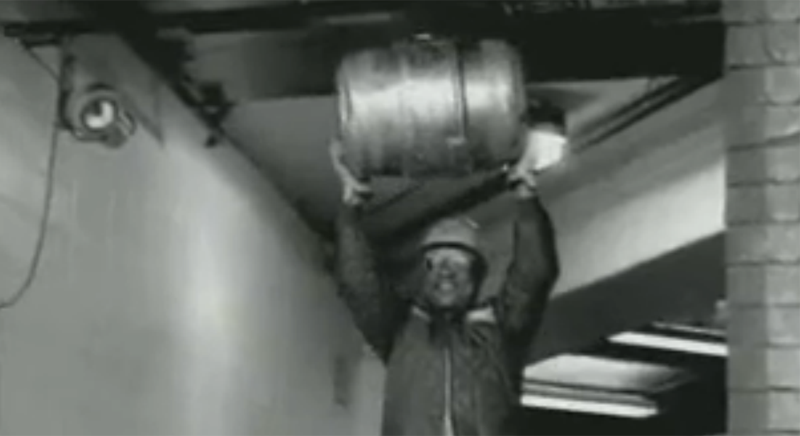When Miller Genuinely Stopped Living the High Life
It was early 1985, and the Miller Brewing Co. was in trouble. Ten years before, the Milwaukee-based concern had smacked a commercial homerun with the introduction of Miller Lite. The lower-calorie pilsner interpretation made Miller the second-biggest brewer in the nation, with Miller Lite eventually accounting for roughly one in 10 of all the beers sold in the United States.
In the intervening decade, though, Miller’s arch rival Anheuser-Busch had, as The New York Times put it, “steamrollered its competition” with sophisticated marketing and advertising campaigns as well as light beers of its own such as Natural Light and Bud Light. Moreover, its Budweiser brand by itself accounted for a whopping one in four beers sold in the U.S., compared with Miller Lite’s 10 percent share.
Against this, Miller’s revenue was stagnant, its brands (aside from Miller Lite) flailing, and its breweries operating at well under capacity. It had yet to even use the 8.5 million-barrel one it built in Trenton, Ohio, in 1984. Wags began to whisper that Miller would soon join the likes of Schaefer, Pabst, Rheingold and Schlitz, ghosts of their former selves, never again the same. Wasn’t that the trend in American brewing anyway? There were fewer than 45 brewing companies in the U.S. in 1985. What was one more shuffling off?
Then Miller began to turn things drastically around. A new beer and the relegation of an old one led the turnaround, which commenced around this time 30 years ago.
An early ad for what Miller called Miller Genuine Draft carried the bold, blocky tagline “Twist the Cap, Beer on Tap.” The brewery billed the beer, first tested in 1985 and rolled out nationally in the summer of 1986, as thoroughly “cold-filtered,” which was supposed to give it a taste and mouthfeel like that of beer straight from the tap. MGD, as it came to sometimes be called, also required no refrigeration nor pasteurization. It was Miller’s stab at packaging draft beer.
And it paid off handsomely. Miller produced 1.6 million barrels of MGD in 1986, initially through its Winston-Salem, N.C., brewery (tobacco kingpin Philip Morris was Miller’s corporate parent then). By 1988, according to the Wall Street Journal, MGD accounted for 3 percent of the U.S. beer market—not a huge share, but remarkable for a beer less than 36 months old. By contrast, Milwaukee’s Best, a cheaper beer Miller introduced in 1984, never came close to these numbers, in part because of less marketing but also because Milwaukee’s Best never took hold among consumers like MGD did.
More importantly for Miller’s bottom line, MGD picked up the financial slack left by the steep decline in sales of Miller High Life. That concoction had quickly become the second biggest-selling beer in the nation after its introduction in 1981, behind only hegemonic Budweiser. Unfortunately—and, in retrospect, unwisely—Miller raised the price for High Life just as a major recession took hold; consumers opted for cheaper beers and Miller time was up: Sales of High Life plunged from 23 million barrels that first year to 14 million in 1984.
High Life never really recovered; and Miller was happy to have MGD eclipse it as the 1980s faded into the 1990s and the company retained its No. 2 spot behind Anheuser-Busch among the nation’s biggest breweries. An interesting aside from that new decade: Miller in the late 1990s ran a brief ad campaign for MGD with taglines such as “It’s time for a good-old Macro-Brew,” “It’s time for beer to quit acting like wine,” and “It’s time to drink beer imported all the way from Milwaukee.”
The campaign was a reaction to the rise of what were then being called micro-breweries. It also foreshadowed that controversial Super Bowl commercial Anheuser-Busch ran just this past February. You know the one: about beer “brewed for drinking. Not dissecting. … Let them sip their pumpkin peach ale.”
Read more Acitelli on History posts.
Tom Acitelli is the author of The Audacity of Hops: The History of America’s Craft Beer Revolution. His new book, American Wine: A Coming-of-Age Story, is available for pre-order. Reach him on Twitter @tomacitelli.


Was/is MGD simply High Life unpasteurized? Does anyone know?
Gary Gillman
That’s my understanding.
Uh, Miller High Life has been around since 1903, not 1981 as stated in your article.
Wesley, the article does not state When High Life came out. The subject of the paragraph on which you are confusing, is MGD. Read it again
So am I to assume that MGD is no longer made?
Just bought some today. It’s still around m8
Milwaukee’s Best was origianally brewed by A. Gettleman in Milwaukee in the late 1800s. Gettleman was acquired by Miller in 1961 and MB continued to be brewed by Miller until 1975. It was later re-introduced in 1985 and has been around ever since. It was not originally a sub- premium. That’s pure Miller marketing.